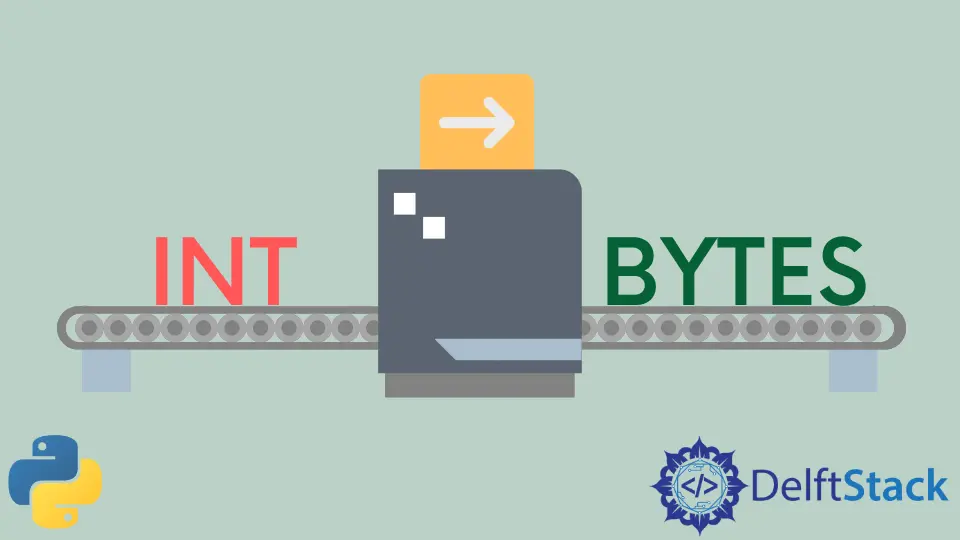如何将整型 int 转换为字节 bytes

将整型 int 转换为字节 bytes 是将字节 bytes 转换为整型 int 的逆操作,本文中介绍的大多数的 int 到 bytes 的方法都是 bytes 到 int 方法的反向方法。
Python 2.7 和 3 中 int 到 bytes 转换的通用方法
你可以使用 Python struct 模块中的 pack 函数将整数转换为特定格式的字节。
>>> import struct
>>> struct.pack("B", 2)
'\x02'
>>> struct.pack(">H", 2)
'\x00\x02'
>>> struct.pack("<H", 2)
'\x02\x00'
struct.pack 函数中的第一个参数是格式字符串,它指定了字节格式比如长度,字节顺序(little/big endian)等。
Python 3 中新引入的 int 到 bytes 的转换方法
使用 bytes 来进行 int 到 bytes 的转换
在上一篇文章中提到过,bytes 是 Python 3 中的内置数据类型。你可以使用 bytes 轻松地将整数 0~255 转换为字节数据类型。
>>> bytes([2])
b'\x02'
整数需要放在括号 [] 中,否则你得到将是占用该整数个字节位置的空字节,而不是相应的字节本身。
>>> bytes(3)
b'\x00\x00\x00'
通过 int.to_bytes() 方法将整型转换为字节类型
从 Python3.1 开始引入了一个引入了一个新的整数类方法 int.to_bytes()。它是上一篇文章中讨论的 int.from_bytes() 反向转换方法。
>>> (258).to_bytes(2, byteorder="little")
b'\x02\x01'
>>> (258).to_bytes(2, byteorder="big")
b'\x01\x02'
>>> (258).to_bytes(4, byteorder="little", signed=True)
b'\x02\x01\x00\x00'
>>> (-258).to_bytes(4, byteorder="little", signed=True)
b'\xfe\xfe\xff\xff'
第一个参数是转换后的字节数据长度,第二个参数 byteorder 将字节顺序定义为 little 或 big-endian,可选参数 signed 确定是否使用二进制补码来表示整数。
运行速度比较
Python 3 中, 你有 3 种方法可以转换 int 为 bytes,
bytes()方法struct.pack()方法int.to_bytes()方法
我们将测试每种方法的执行时间以比较它们的性能,最后将会给出来提高程序运行速度的建议。
>>> import timeint
>>> timeit.timeit('bytes([255])', number=1000000)
0.31296982169325455
>>> timeit.timeit('struct.pack("B", 255)', setup='import struct', number=1000000)
0.2640925447800839
>>> timeit.timeit('(255).to_bytes(1, byteorder="little")', number=1000000)
0.5622947660224895
| 转换方法 | 执行时间(100 万次) |
|---|---|
bytes() |
0.31296982169325455 s |
struct.pack() |
0.2640925447800839 s |
int.to_bytes() |
0.5622947660224895 s |
因此,请使用 struct.pack() 函数执行来执行整型到字节的转换以获得最佳执行性能,虽然它已在 Python 2 中引入了,生姜还是老的辣!
Founder of DelftStack.com. Jinku has worked in the robotics and automotive industries for over 8 years. He sharpened his coding skills when he needed to do the automatic testing, data collection from remote servers and report creation from the endurance test. He is from an electrical/electronics engineering background but has expanded his interest to embedded electronics, embedded programming and front-/back-end programming.
LinkedIn